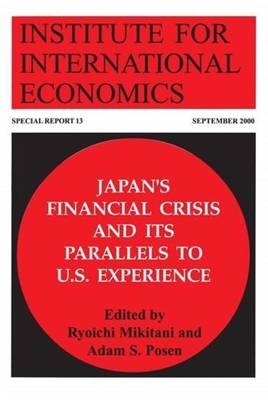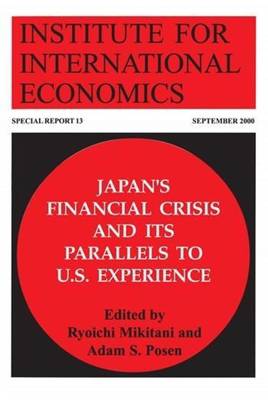
Door een staking bij bpost kan je online bestelling op dit moment iets langer onderweg zijn dan voorzien. Dringend iets nodig? Onze winkels ontvangen jou met open armen!
- Afhalen na 1 uur in een winkel met voorraad
- Gratis thuislevering in België vanaf € 30
- Ruim aanbod met 7 miljoen producten
Door een staking bij bpost kan je online bestelling op dit moment iets langer onderweg zijn dan voorzien. Dringend iets nodig? Onze winkels ontvangen jou met open armen!
- Afhalen na 1 uur in een winkel met voorraad
- Gratis thuislevering in België vanaf € 30
- Ruim aanbod met 7 miljoen producten
Zoeken
€ 42,45
+ 84 punten
Omschrijving
Japan is only one of many industrialized economies to suffer a financial crisis in the past 15 years, but it has suffered the most from its crisis--as measured in lost output and investment opportunities, and in the direct costs of clean-up. Comparing the response of Japanese policy in the 1990s to that of US monetary and financial policy to the American Savings and Loan Crisis of the late 1980s sheds light on the reasons for this outcome.
This volume was created by bringing together several leading academics from the United States and Japan--plus former senior policymakers from both countries--to discuss the challenges to Japanese financial and monetary policy in the 1990s. The papers address in turn both the monetary and financial aspects of the crisis, and the discussants bring together broad themes across the two countries' experiences. As the papers in this Special Report demonstrate, while the Japanese government's policy response to its banking crisis in the 1990s was slow in comparison to that of the US government a decade earlier, the underlying dynamics were similar. A combination of mismanaged partial deregulation and regulatory forebearance gave rise to the crisis and allowed it to deepen, and only the closure of some banks and injection of new capital into others began the resolution. The Bank of Japan's monetary policy from the late 1980s onward, however, was increasingly out of step with US or other developed country norms. In particular, the Bank of Japan's limited response to deflation after being granted independence in 1998 stands out as a dangerous and unusual stance.Specificaties
Betrokkenen
- Auteur(s):
- Uitgeverij:
Inhoud
- Aantal bladzijden:
- 275
- Taal:
- Engels
- Reeks:
- Reeksnummer:
- nr. 13
Eigenschappen
- Productcode (EAN):
- 9780881322897
- Verschijningsdatum:
- 1/09/2000
- Uitvoering:
- Paperback
- Formaat:
- Trade paperback (VS)
- Afmetingen:
- 152 mm x 229 mm
- Gewicht:
- 358 g

Alleen bij Standaard Boekhandel
+ 84 punten op je klantenkaart van Standaard Boekhandel
Beoordelingen
We publiceren alleen reviews die voldoen aan de voorwaarden voor reviews. Bekijk onze voorwaarden voor reviews.











